This article was medically reviewed by Lacy Windham, MD. Lacy Windham, MD, is a Board-Certified Obstetrician & Gynecologist in Cleveland, Tennessee. Dr. Windham attended medical school at the University of Tennessee Health Science Center in Memphis. Her residency was completed at Eastern Virginia Medical School in Norfolk, Virginia. She was the recipient of multiple awards during her residency training, including Most Outstanding Resident in Maternal Fetal Medicine, Most Outstanding Resident in Oncology, Most Outstanding Resident Overall, and Special Award in Minimally Invasive Surgery.
There are 16 references cited in this article, which can be found at the bottom of the page.
This article has been viewed 109,634 times.
Research suggests that you may be able to restore your fertility by getting your tubes "untied" (tubal ligation reversal), but everyone's experience is different. During this procedure, your doctor will try to reconnect your blocked fallopian tubes so that eggs can enter your uterus and potentially get fertilized by sperm.[1] Experts say the success rate for getting pregnant after getting your tubes "untied" ranges from 30% to 80% in the 2 years after the procedure. Your likelihood of getting pregnant depends on factors like your age, the type of procedure you had, the length of your fallopian tubes, and your scar tissue, so talk to your doctor to find out what you should expect.[2]
Steps
Seeing Your Gynecologist
-
1Get copies of your operative reports. Your gynecologist will want to know how your tubes were “tied.” Procedures that cause the least amount of damage and maintain tube length are easier to reverse.
- Your two fallopian tubes are a part of your uterus; they are like long, thin ears on the uterus. Your tube catches an egg released from your ovary and carries the sperm to that egg. After the egg and sperm join, this fertilized egg is carried it into the uterus where it implants and grows into a fetus.[3] [4]
- There are many ways to have your tubes “tied,” but none of these procedures actually "tie" them like a knot.[5] Your doctor may have used tubal rings or clips to clamp them shut. Another method is to scar and block your tubes using either a burning tool or special insert.[6] [7]
-
2Ask your doctor about how a tubal reversal is performed. The tubal reversal is performed in either a hospital or an outpatient center. The gynecologist will perform a laparoscopic procedure. This includes removing any foreign objects (clip, ring, insert), cutting away any scar tissue, and then reconnecting the tubes by sewing the healthy ends back together.[8]
- Your gynecologist will be operating in your pelvis which is the lower portion of your abdomen. There is a risk of bleeding, infection, and injury to organs located near your tubes. Anesthesia is used to control your pain and to keep you asleep; you could develop a bad reaction these medications.[9]
- Getting pregnant is the outcome you want. However, there is a 10% chance your pregnancy could be ectopic, in which the fertilized egg implants and grows outside your uterus. A majority of the time this happens in one of your tubes which is not large enough for a baby to grow. Your pregnancy would end early, your tube could be damaged, or you could have significant, even life-threatening, bleeding.
Advertisement -
3Talk to your gynecologist about any reproductive issues. Your OB/GYN will need to know about any health issues involving your uterus, ovaries, and vagina in order to figure out if you are a good candidate for a tubal reversal.
- The success of your tubal reversal is affected by how much scar tissue you have in and around your tubes. It is important to know if you had surgery in the past for endometriosis. This disease occurs when little pieces of the lining inside your uterus end up outside of your uterus stuck on organs like your ovaries or bladder. Your doctor will ask if you have a history of pelvic inflammatory disease (PID). PID occurs when a serious infection spreads from your vagina up into your uterus, fallopian tubes, and ovaries. Scar tissue from previous surgery, endometriosis, and/or PID could make the reversal harder to do.[10] [11]
- The doctor is looking for anything which may affect your ability to get pregnant. Being pregnant in the past is a good sign it can happen again. Let her know if you were ever pregnant and if it was a healthy pregnancy.[12] [13]
- You are likely to be a good candidate for reversal if your tubes were closed with rings or clips or if you only had a small part of your tube removed. Procedures like Essure and Adiana that use inserts and sometimes burning are harder to reverse because of the amount of scarring. If you are younger than 40 and had your tubes tied immediately after delivery, some surgeons consider you to be the best candidate for reversal.[14]
-
4Undergo a thorough physical examination by your doctor. This exam and any studies your doctor orders are important to help keep you safe during the surgery. A safe procedure increases your chances of getting pregnant.[15]
- An older woman, 40 years and up, usually has poorer egg quality and fewer healthy eggs remaining. You may find it harder to get pregnant. Your doctor may order a study where your follicles are counted to see how many eggs you have left. She also can order blood tests to check your follicle stimulating hormone (FSH) and estradiol (E2) levels. If these hormone levels are abnormal, it may be a sign that your ovaries are not working well enough to get you pregnant.[16] [17] [18]
- Your doctor may find it harder to perform your tubal reversal if you are overweight. Your procedure will take longer. You will be under anesthesia longer, increasing your risk of having a bad reaction. Your doctor will determine your body mass index (BMI), an indicator of body fatness, by using your height and weight. Your extra weight should not affect your ability to get pregnant.[19]
- Your doctor may order a hysterosalpingogram (HSG) to check the length of your fallopian tubes. This procedure can be performed in two ways. The first way is to inject a dye into your uterus then use fluoroscopy, a special X-ray, to see your tubes. The second way is to put sterile fluid filled with small bubble into your uterus and see your tubes with ultrasound which uses sound waves. Ultrasound also can be used to see if your ovaries appear normal and healthy.[20]
- Knowing about your general state of health, such as the presence of heart disease, lung disease, bleeding disorders, or any previous bad reactions to anesthesia, helps your doctor take better care you during the surgery.
-
5Bring your partner with you to the doctor. It is best for your partner to undergo semen analysis, including a sperm count. You want him to be able to get you pregnant once your tubes are untied. This test is fairly inexpensive.[21] [22]
- The gynecologist will send your partner to an urologist. This type of doctor can treat your partner if any problems are found.
-
6Talk to your doctor about in vitro fertilization (IVF). This is another option for becoming pregnant if you are not a good candidate for tubal reversal or it fails. IVF involves combining eggs and sperm outside the body in a laboratory and then placing the fertilized eggs inside your uterus.[23]
- There are good and bad things about IVF. Trying to decide between IVF and tubal reversal is hard. Your doctor will talk to you and your partner about things like age, cost, how much time it may take to get pregnant, and how you still may not get pregnant.[24]
Undergoing the Tubal Reversal
-
1Ask for recommendations. How well the tubal reversal turns out for you is based upon the skill of your doctor and the quality of the care given to you at the hospital or outpatient center. If you have family or friends who have had similar procedures done, ask them to recommend a provider.[25]
- Ask your doctor how often her patients get pregnant after their tubes are untied. The number should be between 40 and 85% of the time.[26]
- Make sure the hospital or outpatient center where your doctor operates is accredited. This means the hospital or center is checked regularly to make sure it will provide you with the best possible care. Check the hospital’s website. A hospital proudly advertises every accreditation it has. A center will brag about the low number of surgical complications it has. Be wary if this is lacking.
-
2Start fasting the night before the procedure. Do not eat or drink anything, including gum, after 12 midnight the night before the surgery. You cannot eat or drink again until after the procedure.[27]
-
3Ask your doctor what medications you need to stop taking. This is very specific to you and your medical conditions. You are not cheating on your fast if you take a medication with a small sip of water after midnight.[28]
- Medications like aspirin, which may cause bleeding, must be stopped several days before the tubal reversal.[29]
-
4Bathe or shower the night before the tubal reversal. Use an anti-bacterial soap like Lever or Dial. Repeat your bath or shower in the morning for the best results. Do not shave your abdomen or your pubic area.[30] [31]
- It does not matter what type of soap you use. Getting your skin clean is the most important part. It decreases the amount of bacteria on the skin and lowers the chances of you getting an infection after the tubal reversal. Pay special attention to your belly button.
- Nicks made in your skin while shaving could increase the risk of infection after your procedure. Let the trained professionals helping your doctor in the operating room take care of hair removal.[32]
-
5Remove all jewelry and nail polish. You could be injured or interfere with the instruments meant to keep you safe in the operating room.[33]
- Your doctor uses electrocautery to control bleeding during your procedure. Your skin could be burned, where the jewelry is touching it, when she uses this instrument because it produces a mild electrical current.
- A pulse oximeter is used to make sure the amount of oxygen in your blood stays in the normal range. This machine sends light waves through your nail to take these measurements; your nail polish interferes with this process.[34]
Recovering after the Tubal Reversal
-
1Restart your normal routine in stages. It makes a difference if you had the open or laparoscopic tubal reversal. The amount of pain and discomfort you are having will determine your ability to do things like returning to work, doing housework, or walking up stairs.[35]
- You may go home the same day or the next day after the laparoscopic procedure because the incisions are small and there is less pain. You will have to stay in the hospital for several days after the open procedure. Your doctor will give you pain medicine when you go home.[36]
- You should not lift anything heavier than 10 to 15 pounds for 4 to 6 weeks. It takes this long for the tissues in the abdominal wall to heal. Expect to do everything sooner than later if you have undergone the laparoscopic procedure.
-
2Call your doctor immediately if you develop serious symptoms at home. These serious symptoms include heavy vaginal bleeding, severe abdominal pain, persistent nausea and vomiting, excessive thirst or sweating, failure to pass gas or urine, severe bloating and/or constipation, and drainage, bleeding, or redness around the incision site.
- Heavy vaginal bleeding, requiring more than one pad per hour, combined with severe abdominal pain may be a sign of uncontrolled bleeding from the site of your tubal reversal. Excessive thirst and sweating can be a sign of bleeding, too. You want to drink liquids because your body needs to replace the fluids lost due to the bleeding. Sweating is your body’s response to the stress of losing a lot of blood. Remember that calling emergency services is always an option.
- Nausea and vomiting can be caused by anesthesia or your pain medication. Your body clears out the medications used during anesthesia in about 24 hours. Your doctor can give you a medication to help with the nausea and vomiting to get you through this period. If your doctor thinks the pain medication is the problem, she will prescribe a different one.
- An ileus occurs when your intestines stop pushing food and gas forward through the intestines. This happens after abdominal surgery, especially an open procedure. You will have nausea, vomiting, bloating, abdominal pain, and pass less gas. Anti-nausea medications should not be used. Time resolves the ileus. You can drink small amount of liquids until your intestines recover. Call your doctor if your symptoms get worse instead of getting better over time.
- Pain medications can cause severe constipation. Eat high fiber foods, vegetables or whole grain products, and take a stool softener. Call the doctor if you completely stop passing gas and stool.
-
3Follow your doctor’s instructions for wound care. You want your wound to stay dry and clean so that it can heal well. Look at the wound to make sure there are no signs of an infection, such as drainage (including blood), fever (temperature greater than 101 degrees), and/or redness and warmth around the wound(s).
- Increasing abdominal pain and fever could be a sign of a serious infection inside the abdomen. Call your doctor so that she can examine you, order the appropriate tests, and decide how to treat the infection.
- Your doctor will have specific instructions. The general rule is to wait 2 to 3 days before taking the dressing off the wound(s). It takes that long for the skin portion of the wound to seal and protect deeper tissue from infection. If you have a special waterproof dressing on the wound(s), you can shower immediately. Otherwise, stand at the sink and wash around your dressing until the 2 to 3 days have passed. You can shower after this time. Letting soapy water gently run over your wound(s) helps keep it clean. Just dry it off after you are done. Do not take a bath for about a month.
-
4Schedule a follow-up appointment with your doctor. Most doctors will want to see you around two weeks after the tubal reversal. Expect this to be the first of many as you heal and then try to get pregnant.
- The first visit is about making sure you are healing as expected. She will examine your wound and look for any signs of infection. She will press on your abdomen and make sure your pain is decreasing appropriately.
- Most couples get pregnant in the first 6 months after the tubal reversal. If you do not get pregnant, she will schedule a hysterosalpingogram to make sure your tubes are open and functioning properly. A majority of the time, your tubes will be opened. You will try other methods to get pregnant. You will keep track of when you ovulate and plan to have sex around that time. The doctor can use drugs to make it more likely you will ovulate or she could have your partner give a sample of his semen so that she can put in inside your uterus. IVF will be discussed at some point if you continue to have difficulty getting pregnant.[37]
References
- ↑ https://www.mayoclinic.org/tests-procedures/tubal-ligation-reversal/about/pac-20395158
- ↑ https://medlineplus.gov/ency/article/007651.htm
- ↑ http://www.medicinenet.com/script/main/art.asp?articlekey=3375
- ↑ http://www.britannica.com/science/fallopian-tube
- ↑ http://www.healthywomen.org/content/ask-expert/1777/reversing-tubal-ligation
- ↑ http://www.britannica.com/science/fallopian-tube
- ↑ http://www.healthywomen.org/content/ask-expert/1777/reversing-tubal-ligation
- ↑ http://www.mayoclinic.org/tests-procedures/tubal-ligation-reversal/basics/what-you-can-expect/prc-20020246
- ↑ http://www.mayoclinic.org/tests-procedures/tubal-ligation-reversal/basics/risks/prc-20020246
- ↑ http://www.webmd.com/infertility-and-reproduction/guide/tubal-ligation-reversal
- ↑ http://www.medicinenet.com/pelvic_inflammatory_disease/article.htm
- ↑ http://www.webmd.com/infertility-and-reproduction/guide/tubal-ligation-reversal
- ↑ http://www.medicinenet.com/pelvic_inflammatory_disease/article.htm
- ↑ http://www.webmd.com/infertility-and-reproduction/guide/tubal-ligation-reversal
- ↑ http://www.webmd.com/infertility-and-reproduction/guide/tubal-ligation-reversal
- ↑ http://www.webmd.com/infertility-and-reproduction/guide/tubal-ligation-reversal
- ↑ http://www.advancedfertility.com/ovarian-reserve.htm
- ↑ http://center4tubalreversal.com/faq.html#3
- ↑ http://center4tubalreversal.com/faq.html#3
- ↑ http://www.webmd.com/infertility-and-reproduction/guide/tubal-ligation-reversal
- ↑ http://www.webmd.com/infertility-and-reproduction/guide/tubal-ligation-reversal
- ↑ http://center4tubalreversal.com/faq.html#3
- ↑ http://www.webmd.com/infertility-and-reproduction/guide/in-vitro-fertilization
- ↑ https://www.arcfertility.com/tubal-reversal-versus-ivf-best-choice/
- ↑ http://www.webmd.com/infertility-and-reproduction/guide/tubal-ligation-reversal
- ↑ http://www.webmd.com/infertility-and-reproduction/guide/tubal-ligation-reversal
- ↑ http://www.fertilityanswers.com/surgery/pre-op-surgery-instructions/
- ↑ http://www.fertilityanswers.com/surgery/pre-op-surgery-instructions/
- ↑ http://www.fertilityanswers.com/surgery/pre-op-surgery-instructions/
- ↑ http://www.fertilityanswers.com/surgery/pre-op-surgery-instructions/
- ↑ http://www.med.umich.edu/1libr/InfectionControl/showeringbeforesurgery.pdf
- ↑ http://www.med.umich.edu/1libr/InfectionControl/showeringbeforesurgery.pdf
- ↑ http://www.fertilityanswers.com/surgery/pre-op-surgery-instructions/
- ↑ http://www.ncbi.nlm.nih.gov/pubmed/3382042
- ↑ http://www.webmd.com/infertility-and-reproduction/guide/tubal-ligation-reversal
- ↑ http://www.webmd.com/infertility-and-reproduction/guide/tubal-ligation-reversal
- ↑ http://center4tubalreversal.com/faq.html#3

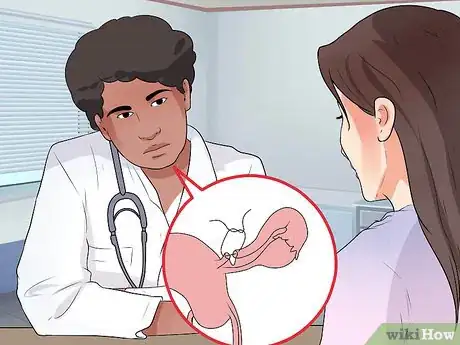
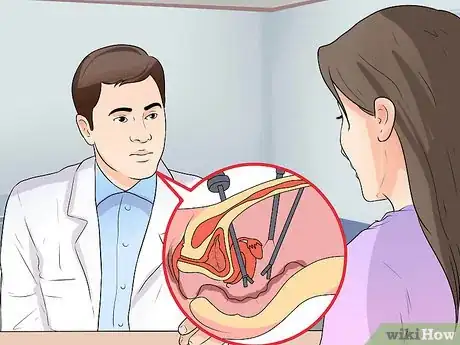
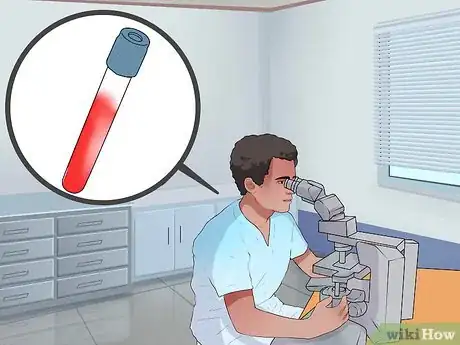
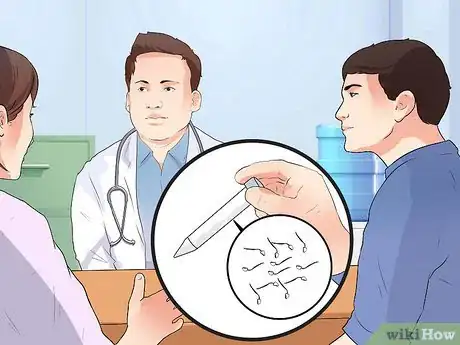
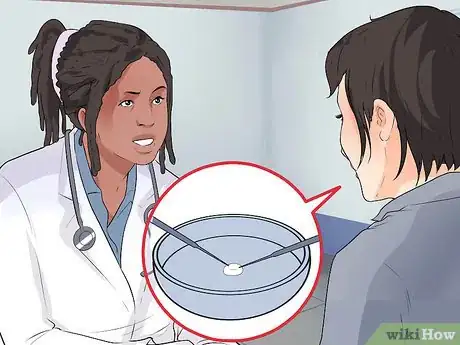




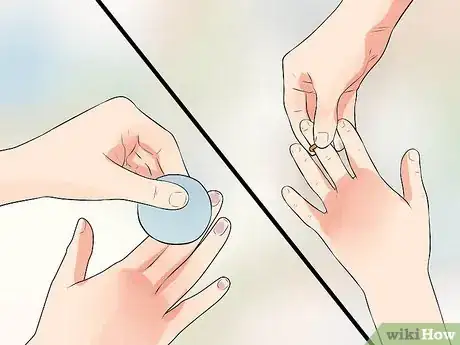
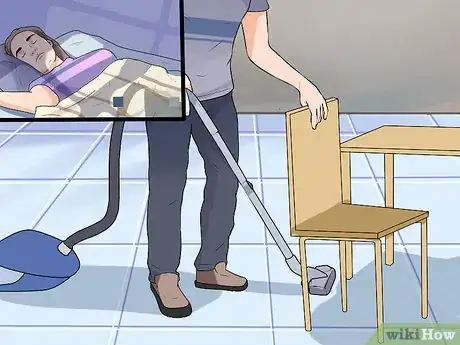

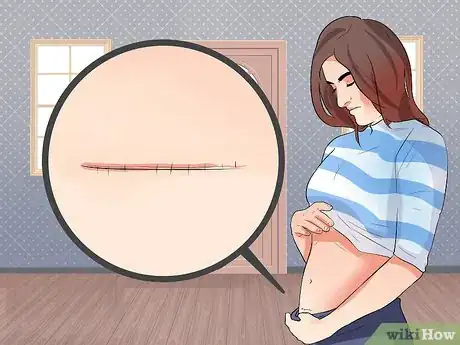

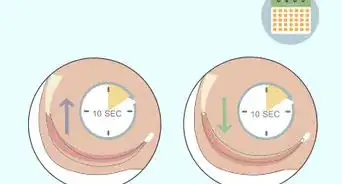




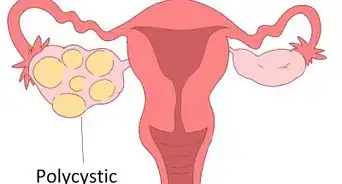























































Medical Disclaimer
The content of this article is not intended to be a substitute for professional medical advice, examination, diagnosis, or treatment. You should always contact your doctor or other qualified healthcare professional before starting, changing, or stopping any kind of health treatment.
Read More...